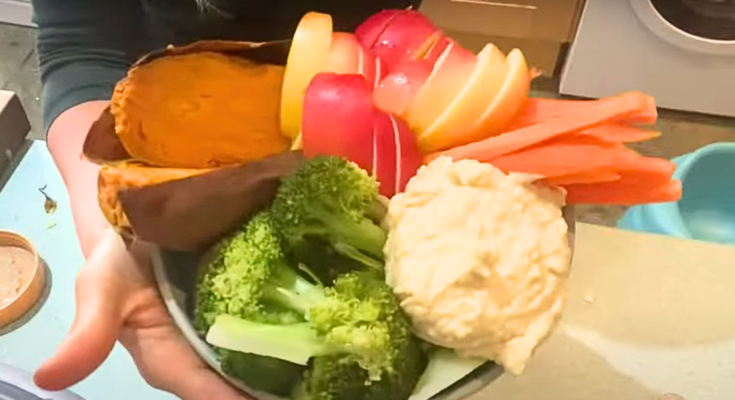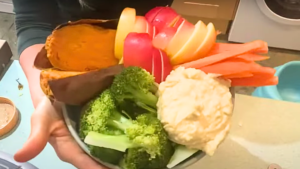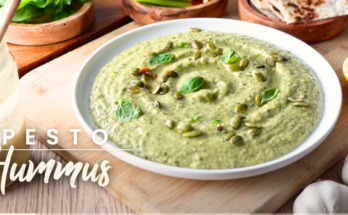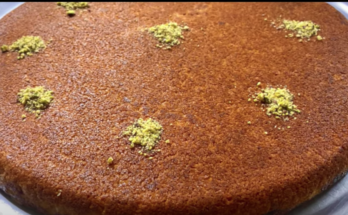Mastering the Art of Low Fat Hummus Recipe : A Delightfully Healthy Dip
Hummus, a smooth and delicious Middle-Eastern paste, has solidified its position among culinary staples all around the globe. Described as delectable and with a satiny smooth texture and a delicious, crunchy taste, hummus is popularly known to be a health food. However, the ordinary hummus can be very oily because of the included olive oil and tahini paste. I believe that it shall turn out to be a great guide to those lovers of this dip who want to stick to a low-fat diet. This article will take you through picking the right ingredients and process involved while preparing a zero compromise low fat hummus .
Why Choose Low Fat Hummus Recipe ?
Low-fat hummus offers all the flavor and satisfaction of traditional hummus but with fewer calories and less fat. It’s a great option for those who are watching their fat intake for health reasons or anyone looking to maintain a balanced diet. By making a few simple adjustments, you can enjoy a delicious and nutritious dip that complements a variety of dishes.

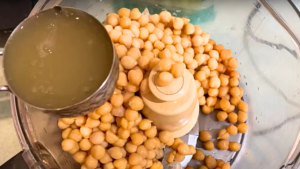
Ingredients for Low Fat Hummus Recipe:
Before we dive into the recipe, let’s gather all the necessary ingredients. For a delicious low-fat hummus, you will need:
- 1 can (15 ounces) of chickpeas (garbanzo beans), drained and rinsed
- 1/4 cup of plain low-fat yogurt (or non-dairy yogurt for a vegan option)
- 2 tablespoons of fresh lemon juice (about one lemon)
- 1 tablespoon of tahini (sesame seed paste)
- 2 cloves of garlic, minced
- 1/2 teaspoon of ground cumin
- 1/4 teaspoon of paprika (plus extra for garnish)
- 1/4 teaspoon of salt
- 2-4 tablespoons of water (as needed for desired consistency)
- Fresh parsley, chopped (for garnish)
- A drizzle of olive oil (optional, for garnish)
Instructions for Making Low-Fat Hummus

Step 1: Prepare the Chickpeas
Start by draining and rinsing the chickpeas under cold water. This helps to remove excess sodium and any preservatives used in the canning process. For an even creamier hummus, you can also peel the chickpeas by gently squeezing each one until the skin slips off. This step is optional but highly recommended for the best texture.

Step 2: Blend the Base
In a food processor, combine the chickpeas, low-fat yogurt, lemon juice, tahini, minced garlic, ground cumin, paprika, and salt. Blend the mixture until smooth. If the hummus is too thick, add water one tablespoon at a time until you reach your desired consistency. The yogurt in this recipe replaces most of the olive oil, adding creaminess without the extra fat.
Step 3: Adjust Seasonings
Taste your hummus and adjust the seasonings as needed. You can add more lemon juice for acidity, garlic for a stronger flavor, or cumin for a warmer, spicier taste. Remember, the best hummus is all about balancing flavors to suit your palate.
Step 4: Serve
Transfer the hummus to a serving bowl and use a spoon to create a small well in the center. Drizzle a tiny amount of olive oil into the well if desired. Garnish with a sprinkle of paprika and chopped fresh parsley. This adds a touch of color and enhances the presentation.
Read more: Jalapeno Hummus Recipe
Tips in Achieving the Perkins Low Fat Hummus Recipe:
1. Use Fresh Ingredients
Peeling your garlic and fresh lemon juice will greatly improve the taste of the hummus. It is also advisable not to use bottled lemon juice or garlic that has already been minced for better results.
2. Experiment with Add-Ins
But the traditional recipe for making hummus is great, you can always tweak by mixing your hummus with roasted red peppers or sun-dried tomatoes or even fresh basil or cilantro.
3. Adjust the Texture
For a thicker hummus, blend the paste less time, and for a smoother hummus, blend the paste for a longer time and also adding a little more water or yogurt. If you want more chunky texture of your soup, they should blend for a shorter time period.
4. Pair with Healthy Dippers
Enjoy your low-fat hummus with crispy and colorful fresh vegetables that include carrots, cucumbers, bell peppers or cherry tomatoes. Another tasty option is crackers made from whole-grain flour or pita bread.
Read More: Greek Hummus Recipe

